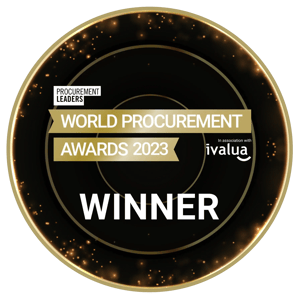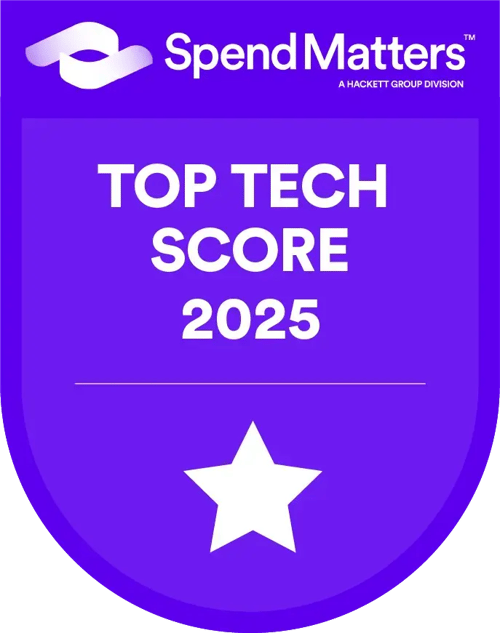Suppliers play an essential role in your sustainability journey. Sustainability goals will only be achievable within the supply chain if your key suppliers are fully engaged and understand their role in your sustainability journey and success.
Your sustainability strategy and objectives must be aligned with their goals, too. Both parties should agree on sustainability standards and monitoring practices jointly. After that, it is up to each party to achieve the mutually agreed-upon standards.
There are two ways of working towards your sustainability goals with suppliers:
- Selecting suppliers whose sustainable commitments match your own, or
- Working to establish collaborative processes with suppliers to get there.
While the first may seem ideal, it's not always realistic. That's why you need to know how best to manage suppliers towards sustainability.
In this article, we'll go over how to select the most sustainable suppliers, and develop your sustainable practices with them.
Sustainability in procurement
Sustainable procurement is based on the principle that environmental, ethical, and social factors are considered in decision-making and long-term financial profitability. To get the whole picture, read our in-depth guide Sustainable Procurement 101.
The first step toward a sustainable supply chain is to understand your organization’s ambitions and translate them into supplier selection, management practices, and performance requirements.
75% of emissions come from the supply chain. That's why you need to start with suppliers.

Sourcing new suppliers with sustainability in mind
Traditionally, supplier selection criteria apply to the estimated total cost of ownership (TCO), product quality, supplier capabilities, consistency, and supplier risk.
An even more basic approach considers three factors: price, delivery, and quality. However, the role of sustainability is increasing.
Sustainability requirements should form part of the weighted evaluation criteria when undertaking a new sourcing project.
This is the chance to provide rules and guidelines of what will be expected from a new supplier in the future. It makes sense to include these requirements in the pre-qualification process, where requirements are mandatory. Possible examples of prerequisites where proof is required are:
Environmental Standards
- Do you use a certified environmental management system (EMS)?
- How do you manage emissions, energy, waste, and water use?
Social Standards
- Do you comply with UN Global Conduct?
- Do you comply with fair trade practices?
- What is your health and safety record?
- What is your policy on human rights/fair pay/working conditions/diversity?
Governance
- Do you have an anti-bribery and anti-corruption policy?
- Do you comply with industry regulations and legislation?
- Have you ever been prosecuted or fined for infringements?
Potential suppliers that successfully meet your sustainability criteria (or are willing to do so) will continue through the selection process.
Non-compliant candidates (with no willingness to comply with requirements at the moment of award) will be disqualified after consideration.
Should they be awarded a contract, their sustainability obligations will be agreed upon and documented as part of the contracting process.

Sustainability in supplier relationship management
The supplier base is a critical success factor in your sustainability efforts. Current suppliers will need to be communicated your sustainability aspirations and commitments.
They can be onboarded to your efforts if you communicate expectations and offer support and development opportunities.
The current state of sustainability – a starting point
What is the sustainability status of your suppliers? Do they have their own goals, and if so, are they aligned with yours?
- Ask for their specific sustainability objectives and metrics
- Refer to their documented history and any certifications gained, e.g., ISO
- How do they track their progress against their goals?
- Establish to what extent they are being successful in achieving their goals
- Regularly review to what extent their objectives are aligned with yours.
For your key suppliers, it may be necessary to dig deeper into their supply chain (Tier 2) and even into your suppliers’ suppliers (Tier 3) to get the best results. Reviewing if their Supplier Code of Conduct includes the same elements as yours could be a starting point.
Benefits of sustainability for your suppliers
Your suppliers may ask what’s in it for them in complying with the new practices and set of requirements. Continuum of the business relationship is an obvious benefit for your suppliers in the event of mandatory requirements.
Joint innovation, research, and development are additional benefits that impact future success and customer satisfaction. Collaborative development in sustainability may lead to new products, more intelligent solutions, and more efficient processes that may benefit their business as a whole and provide a competitive advantage compared to their peers.
The aim is to be supportive and promote progress and improvement rather than impose penalties.
The benefits of tracking sustainability for suppliers:
- Cost savings gained by better control over energy and resources
- Increasing brand value through investor and consumer support
- Becoming an employer of choice and better staff engagement
- Better compliance with laws and regulations
- Joint innovation and development
- Competitive advantage through improved reputation and offering
Improving sustainability performance
Supplier relationship management (SRM) is not a one-time effort--it requires consistency and good intentions.
SRM entails the commitment of both parties to sustainability objectives. The expectation of good intent and progress should not only be limited to business performance but also encompass the corporate responsibility framework.
Sustainable performance should be led as any business performance, with targets and agreed-upon KPIs.
These milestones will identify critical concerns so that an improvement plan can be documented and implemented—the aim is a joint effort for a more and more sustainable operation year after another.
Tracking sustainable performance with data
Sustainability reporting depends on demonstrating success through data and reliable information.
Environmental metrics are the most developed and accessible. Environmental metrics include air and noise pollution, power, fuel, energy usage, and water and waste reduction.
Social metrics are not as developed. Measuring social responsibility reliably can be challenging, but it shouldn’t be impossible. Performance can be measured against compliance with human rights goals and social audit standards.
The top environmental metric for organizations is the reduction in carbon emissions. It may seem tricky to track emissions related to your operations but even more challenging to include the emissions of your suppliers in the equation.
Luckily, the market availability and competence to gather reliable sustainability data have gone through the roof. There are solutions available designed to establish baselines, assist in setting KPIs, track progress, and report successes.
See how Sievo can help you identify and reduce your scope 3 carbon emissions.
Data sharing and analysis are vital to sustainability tracking and reporting. Sustainability leaders and procurement professionals can share plans and metrics with their partners and stakeholders through dashboards and portals that are secure, timely, and private.
By reporting on environmental responsibility and other key metrics, you will provide stakeholders with complete visibility into your sustainable performance and speed of progress.
Sustainability reporting requires accurate data and robust methodology to be reliable. Our solution has been audited by a third party. Find out more about the solution and methodology.

Photo: @nrdoherty, Unsplash




